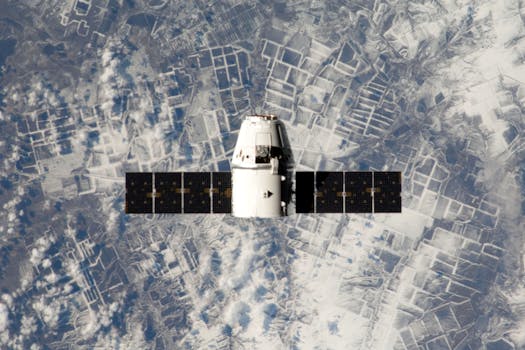From Geostationary to Low Earth Orbit: The Evolution of Satellite Telecommunications in 2023 – Satellite

From Geostationary to Low Earth Orbit: The Evolution of Satellite Telecommunications in 2023 – Satellite
Focus Keyword: Satellite Telecommunications. The satellite telecommunications industry has undergone significant transformations in recent years, shifting from geostationary to low Earth orbit satellites. This evolution has enabled faster, more reliable, and cost-effective connectivity solutions. As the demand for global connectivity continues to grow, satellite telecommunications play a vital role in bridging the digital divide and providing internet access to remote and underserved communities.
Satellite telecommunications have come a long way since the launch of the first commercial geostationary satellite, Intelsat 1, in 1965. Geostationary satellites, which orbit the Earth at an altitude of approximately 36,000 kilometers, have been the backbone of the satellite industry for decades. However, they have several limitations, including high latency, limited bandwidth, and high operational costs. The shift to low Earth orbit (LEO) satellites has addressed these limitations, offering faster, more reliable, and cost-effective connectivity solutions.
The Rise of Low Earth Orbit Satellites

Low Earth orbit satellites, which orbit the Earth at an altitude of approximately 160 to 2,000 kilometers, have revolutionized the satellite telecommunications industry. LEO satellites have several advantages over geostationary satellites, including lower latency, higher bandwidth, and lower operational costs. According to a report by MarketsandMarkets, the global LEO satellite market is expected to grow from USD 2.8 billion in 2020 to USD 19.8 billion by 2025, at a Compound Annual Growth Rate (CAGR) of 34.3% during the forecast period.
One of the key drivers of the LEO satellite market is the growing demand for global connectivity. The increasing use of mobile devices, the Internet of Things (IoT), and cloud computing has created a need for faster, more reliable, and cost-effective connectivity solutions. LEO satellites are well-positioned to meet this demand, offering latency as low as 20 milliseconds, which is comparable to fiber-optic cables. Additionally, LEO satellites can provide higher bandwidth than geostationary satellites, making them ideal for applications such as video streaming, online gaming, and virtual reality.
Challenges and Opportunities

While LEO satellites offer several advantages over geostationary satellites, there are also several challenges and opportunities that need to be addressed. One of the key challenges is the high cost of launching LEO satellites. However, this cost is decreasing with the development of reusable launch vehicles, such as SpaceX’s Falcon 9. Another challenge is the need for a large constellation of satellites to provide global coverage, which can be capital-intensive.
Despite these challenges, the LEO satellite market presents several opportunities for investors, manufacturers, and service providers. The growing demand for global connectivity, the increasing use of IoT devices, and the need for faster, more reliable, and cost-effective connectivity solutions are driving the growth of the LEO satellite market. Additionally, the development of new technologies, such as 5G and quantum computing, is expected to further drive the growth of the LEO satellite market.
Conclusion

In conclusion, the satellite telecommunications industry has undergone significant transformations in recent years, shifting from geostationary to low Earth orbit satellites. The evolution of LEO satellites has enabled faster, more reliable, and cost-effective connectivity solutions, addressing the limitations of geostationary satellites. As the demand for global connectivity continues to grow, satellite telecommunications play a vital role in bridging the digital divide and providing internet access to remote and underserved communities. The LEO satellite market is expected to continue to grow, driven by the increasing demand for faster, more reliable, and cost-effective connectivity solutions.
See more:





